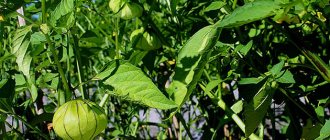The genus of willow or willow (Salix) is extremely numerous and difficult to classify. Its species easily cross-pollinate with each other, creating numerous hybrids that are often difficult to identify.
About 400 representatives of the genus are known, of which only a few are widely used in landscape gardening.
In addition to being unpretentious and easy to care for, decorative willow is represented by dozens of picturesque varieties - trees and shrubs that, after planting, fit into any garden design; most of them do not lose their attractiveness for many years.
Description of willow with photo
Fast-growing and easy to grow, deciduous willows can take on a variety of forms depending on the growing area - from dwarf and creeping shrubs to large, stately trees.
Blooming garden willow
Willow leaves are most often narrow, lanceolate, but can also be elliptical or almost round, smooth or slightly pubescent. In spring, plants are attracted by decorative fluffy male inflorescences-catkins, popularly known as “seals”.
Some inflorescences are very large, almost 6 cm in length. They can be golden, reddish or silver in color, depending on the variety of willow. Willow flowers are honey-bearing. Willow is one of the earliest flowering plants, and its pollen and nectar are the first food for bees after winter.
Strawberry tree in the garden
Due to the ability to form adventitious roots, the plant is very easily propagated using cuttings, but the seed material is viable for only a few days, after which the seeds lose their viability.
Subspecies
There are about 550 subspecies in the willow family. Many have an interesting appearance and are used by gardeners to decorate their plots. Whole-leaved willow is particularly popular. Its varieties can have a completely different appearance, since their height can vary from 1.5 to 6 meters. "Hakuro Nishiki" can be called the most famous among gardeners. This tree has been awarded awards of all kinds for its decorative appearance, which is given a special charm by spotted leaves with white and pink flowers.
It was from him that another popular variety called “Flamingo” was obtained.
Willow "Flamingo" has darker, elongated foliage with a characteristic pinkish tint and clear greenish-white stripes, slightly curled at the ends. As they lengthen, the leaves become green, but the stripes do not disappear, standing out in more contrast. Its height can reach up to 2.5 meters. The crown diameter is about 2 meters. The rich red shoots give it the shape of a sphere.
"Flamingo" is a dioecious plant. Its flowering begins at the very end of May or beginning of June, and the flowers are divided into male and female. The first ones are earrings of a golden hue, the second ones are gray in color. The fruits that appear later look like small boxes covered with fluff, inside of which there are small seeds.
Among the features of "Flamingo" is winter hardiness. It withstands low temperatures and strong gusts of wind.
Despite this, young plants are quite tender, so frosts and extremely low air temperatures can cause significant harm to them. To avoid this, young bushes should be covered for the winter.
Among the popular subspecies, Salix Integra can also be mentioned. Its branches are strewn with leaves of a light green hue and vaguely resemble a fern in shape. The size of the tree reaches 3 meters. It becomes very bright during the flowering period, when purple catkins appear on the shoots, with the scent of hyacinth.
Varieties and types of willow with photos
Numerous varieties of garden species have high decorative characteristics and can be used in any landscape style.
For example, some cultivars of shrub willow are valued for their bright shoots, similar in color and texture to turf, while other varieties are attractive for their interesting growth form or spectacular cat flowers.
Almost every garden species is represented by the “Pendula” form with weeping shoots. More recently, the plant has become an important source of bioenergy production and a representative of ecosystem gardening.
Whole-leaved willow (Salix integra) is a shrub, up to 2–6 meters high. One of the most famous varieties of this species is the variegated Japanese willow “Hakuro Nishiki”. The cultivar is a winner of the prestigious Award of Garden Merit from the Royal Horticultural Society.
Willow "Hakuro Nishiki" is usually grown in the form of a miniature tree on a trunk 1.5 meters high. Its main decorative value is its colorful foliage.
Willow "Hakuro Nishiki" in landscape design
New spring leaves are colored white-cream, pale pink and light green and remain so for most of the season. Mature leaves gradually lose their pink tones.
The shoots are quite stiff, raised, and can have a red or orange-yellow tint, thanks to which the tree remains a bright accent in the garden throughout almost the entire year.
Mediterranean garden design
Growing Hakuro-Nishiki in containers is quite popular today. This is an interesting offer for those who are looking for spectacular and easy-to-care plants.
The variety of this type of willow "Flamingo" was obtained from "Hakuro Nishiki" and is characterized by a darker pink hue of foliage. The "Pendula Waterfall" form of this species is an elegant dwarf tree with drooping shoots and slightly curled leaves.
Weeping willow or Babylonian willow (Salix babylonica) is native to China. It was first described in the twenties of the last century in France. It is a medium to large tree with a graceful weeping form of numerous, slender shoots.
Weeping willow
Slender willow (Salix gracilistyla) . In gardening, its decorative varietal form “Mount Aso” is valued, also known as Japanese pink willow.
In spring, the thin shoots of the bush are covered with large pink-red catkins, after which beautiful bluish-gray leaves appear after flowering.
"Mount Aso"
Creeping willow (Salix repens) is widespread along the banks of reservoirs and rivers in Western and Northern Europe. This is a small shrub species, reaching 1-1.5 meters in height with small, bluish, slightly pubescent leaves.
In changing conditions, the species is able to change its growth form from vertical to creeping. In gardening, the variety “Argentea” is popular, which is often sold on a standard and “Nitida”.
"Argentea"
Matsudana willow (Salix matsudana) is a medium-sized, upright, fast-growing tree native to northeastern China and Korea. The species is named after the Japanese botanist Sadahisa Matsuda.
In gardening, you can find the most common cultivar - the twisting willow "Tortuosa" with outstanding decorative value throughout the year.
Twisty willow "Tortuosa"
The variety owes its popularity to its spirally curved and twisted leaves and shoots, forming a compact, round, graceful crown. This species is not entirely hardy, so choose a warm place protected from the wind to plant willow.
Purple willow (Salix Purpurea) is a deciduous shrub reaching 1-3 meters in height. The shoots are thin, shiny, reddish, while the leaves are quite wide, gray-green.
Catkin cats are often purple or red in color. Once rooted, it gives a structural effect comparable to the strength of a stone wall, which is why it is used to strengthen slopes.
Dwarf willow Nana
This species has low requirements for soil fertility and moisture, but thrives on moist substrates, including those that are periodically flooded.
Several varieties are common in horticulture, including the willow 'Pendula', which has drooping shoots and glaucous leaves and is recognized by the Royal Horticultural Society.
A compact, dwarf cultivar of the purple willow “Nana”, which is pruned almost completely every 4-5 years to maintain its decorative shape.
Brittle globular willow (Salix fragilis) . This tree easily creates hybrids and has fragile, usually olive, shiny branches. The leaves are shiny, dark green. The varietal form of "Bulat" is a slow-growing tree with an almost spherical, dense crown.
"Bulata"
White willow (Salix alba) is a medium to large tree with an irregular, often weeping crown. 'Vitellina' is one of the most showy varieties, known for its colorful shoots that turn all shades of red, orange and yellow in winter.
The Golden Ness cultivar (yellow willow) is a medium-sized deciduous tree, often grown as a multi-stemmed shrub with bright golden-yellow stems. Both varieties are winners of the prestigious Award of Garden Merit from the Royal Horticultural Society.
"Vitellina"
Goat willow (Salix caprea) is a large shrub or small tree with large pinkish-gray catkins. The 'Kilmarnock' variety of goat willow is a beautiful weeping tree that is ideal for decorating a small garden or growing in a container.
Fertilizer application
Flamingo willow quickly adapts to new conditions and takes root perfectly even on infertile lands . Despite this, when planting an ornamental tree, it is worth considering the fact that high-quality soil has a positive effect on the appearance of shoots and foliage. To improve soil quality, a wide variety of fertilizers are used:
- organic fertilizers (8−10 liters);
- complex mineral bait (40 grams);
- means in granules of prolonged action.
Organic and mineral fertilizers are applied to the soil while digging up the garden plot, as well as to the root zone of the plant.
It is necessary to fertilize the soil twice a year - in spring and autumn.
In summer, the greenery of the bush also needs feeding; for this purpose, special fertilizers are diluted with sticky agents that help the complementary foods stay longer on the leaves of the Japanese willow.
Willow planting
Before planting willow, you need to choose a place for its further cultivation. Decorative species prefer warm, wind-protected, sunny or slightly shaded places.
In the shade, plants grow poorly and are at risk of developing diseases; in decorative deciduous varieties, the foliage shade loses its brightness. Willow feels good on fertile, permeable and moist substrates with close groundwater.
On sale you can most often see seedlings with a closed root system, which can be planted throughout the season - from the end of March to October, but the earthen ball should not dry out, as this will affect the survival rate of the willow.
Goat willow Pendula
The exposed root system requires planting in early spring before bud break or late September. It is recommended to plant varietal forms with poor winter hardiness in the spring so that they have time to get stronger over the summer.
The earth ball and root system of the willow seedling should be freely placed in the planting hole. To increase soil fertility, soil from the pit is mixed with compost or azofoska. After planting, the soil is compacted well and watered abundantly.
How to plant trees and shrubs correctly in spring
It is useful to mulch the soil around the seedlings with compost to a thickness of 10 cm. Mulch will ensure good growth and health of willows and prevent rapid evaporation of moisture after watering.
Propagation by cuttings - advice from a specialist
Information on preparing and rooting cuttings is taken from a video about Japanese willow.
- Take cuttings in the spring before the plant begins to actively grow. This way you will cause the least harm and ensure the best survival rate.
- Place the cuttings in a container of water and add a rooting stimulator. After 2 weeks you will have roots, as in the photo. Soak the sprouts in water for at least a month.
- Plant the cuttings in pots with fertile soil. Carry out the work carefully so as not to damage the fragile roots. Water the plants generously to help them establish in their new location.
Propagation by cuttings is described in detail in the video
Features of caring for decorative willow
Watering willow
During drought and heat, willow requires abundant watering; it is also useful to spray the crown of small varietal forms; I especially like spraying “Hakuro Nishiki”.
"Kilmarnock"
After planting, seedlings are especially sensitive to lack of moisture, so they require regular irrigation in the first year. Drying out of the soil is unacceptable, so watering is an important factor in caring for willow.
Willow in winter
Most of the listed species and varietal forms are quite winter-hardy, but in severe winters young plants may partially freeze. To avoid problems, it is recommended to insulate young plants for the first 2-3 years using agrofibre or sackcloth.
Important! The grafting site on the trunk is most at risk of freezing
Feeding
Ornamental willows look spectacular if they are fed every year. The dose of fertilizer depends on the size of the plants, their vigor and the fertility of the soil in which they grow.
What fertilizers and when to feed garden plants?
The first feeding of azophoska is carried out at the end of March after pruning, and the second time during the season is fed in early July. Rotted manure or slow-acting preparations are applied only once - at the turn of March and April, since feeding at a later date can reduce the frost resistance of plants.
Willow pruning in spring
An important care for garden willow is pruning, which strengthens the tree, improves its health and allows it to form a crown. Without this procedure, the plant forms a very loose crown, which significantly loses its attractiveness.
Knowing when and how to prune different varieties of plants will help achieve the desired effect.
How to shape willow? The formation of the crown begins in the first years of growth of young seedlings. Willow tolerates pruning very well, which stimulates the development of new side shoots and limits excessive growth.
The procedure is possible at any time of the year, but severe shortening of the branches is best done in the spring after flowering, but before the leaves appear.
Pruning a weeping willow tree
In the first year after planting, shoots of all varieties are pruned, leaving about 20 cm in length or several buds at the base of the shoots. The cut is made just above the bud, about 3-4 mm.
In subsequent years, all bush willow branches are pruned at the point where they began to grow at the beginning of the previous season. The plant will respond to annual pruning using this method with abundant flowering and lush growth.
Growing fir in the garden, types and varieties
Erect shoots of trees are shortened almost completely in the spring, leaving the trunk. Over the course of a season, after such pruning, the tree produces powerful growth of new branches, forming a dense, rounded crown.
Sections of large branches are treated with funaben or emulsion paint with the addition of 2% topsin.
Don’t be afraid to experiment - the rapid growth rate of willow will smooth out all possible mistakes due to new growth in just a month.
Standard willows with a rounded crown can be pruned several times during the season, but the last cut is made no later than July.
The procedure compacts the crown and stimulates the growth of new shoots. In weeping forms of Pendula, the branches are shortened to a length depending on the personal preferences of the gardener.
To maintain the health of the willow, sanitary pruning is also carried out.
A crown that is too thick is thinned out so that the plant receives more air and light, and weak, diseased and damaged shoots are removed.
It is also worth remembering the systematic cutting down of wild basal shoots, which grow from the rhizomes of willow trees grafted onto the trunk. After pruning, the plants need to be fed and watered abundantly.
Willow propagation by cuttings
Willows are one of the easiest plants to propagate by cuttings. In fact, you can grow a new tree by simply taking part of a branch and planting it in moist soil.
Cuttings take root so easily due to the presence of a natural hormone in the plant tissue that stimulates the growth of new roots.
Willow cuttings
It is better to take cuttings in the spring so that the young seedlings become stronger before the winter cold. Cut cuttings 20-30 cm long and bury them in a moist, fertile substrate directly into open ground or a container.
Choose a place with bright but diffused light, protection from direct sunlight and constantly maintain soil moisture.
The roots form within a few weeks, and by autumn the cuttings can be carefully transplanted to a permanent location.
Willow cuttings placed in water very quickly form roots, after which they are planted immediately in a permanent growing place.
Pests and diseases of garden willow
The willow dries out and turns yellow - the problem is most often caused by a lack of moisture due to irregular watering during drought or planting in sandy soil that does not retain water well.
Willow turns yellow
Drying of willow is caused by a group of fungal diseases and pest attacks.
Spotting of leaves and shoots . Numerous dark brown or black spots appear on the upper side of the leaves, and browning of the tissues can be seen on the reverse side.
Heavily infected leaves turn yellow and fall off prematurely. Willow patches may be brown or black, dry, and have a cracked surface. The tops of infected shoots may die.
Black spotting is characterized by black spots along the midrib. Leaves wrinkle, wither and fall off. Dark necrotic spots, several centimeters in size, appear on the bark, and shoots in the affected area die.
Rust is characterized by the appearance of bright orange-yellow spots on the foliage.
Fungal spores that can survive the winter on dead branches infect new shoots the following season. Wet weather in spring stimulates the spread of diseases, which are especially dangerous for young seedlings.
For disease control and treatment, first of all, leaves and shoots with visible disease symptoms should be cut off and burned to prevent fungal spores from continuing to spread.
How to get rid of aphids using folk remedies
Then the plantings are treated with the antifungal drug Topsin M 500 SC. Spraying must be repeated 2-3 times with an interval of 10-14 days.
Mulching the tree trunk area around the diameter of the crown will help conserve water during dry times, but avoid mulching close to the tree trunk, as this will create ideal conditions for fungal attack.
Among the pests you should be wary of are aphids, caterpillars, scale insects, spider mites, and willow gall midges, which form galls on the leaves and trunk of the willow. Having noticed these pests, it is usually necessary to remove the damaged parts of the shoots and treat the plant with appropriate insecticidal preparations.
Willow in landscape design
Ornamental willow can be planted alone or in groups, such as creating unusual wicker hedges, for which the vibrant purple willow is best suited. Weeping willow will be a magnificent decoration for any pond, and dwarf varieties will fit perfectly into the composition of alpine slides.
Hakuro Nishiki shrub form in garden design
The Japanese willow Hakuro Nishiki in landscape design can be a spectacular tapeworm in the form of a standard tree, and the low-growing shrubby form is planted along paths, flower beds, and lawns as a low variegated hedge.
A tree on a trunk looks charmingly surrounded by a bright flower carpet, miniature shrubs, and against the backdrop of an emerald lawn. Varieties with colored bark planted next to the tree will create a unique decorative accent, which is especially effective in winter and early spring.
Use in landscape design
Iva Hakuro Nishiki is quite popular among landscape designers. It is often used to decorate garden plots, and is planted both in groups and individually. A plant on a trunk is most decorative when planted alone on a lawn. The bush form is excellent for landscaping the coastal strip.
Often, trunks are grown in urban conditions. They look great both in parks and squares, and against the backdrop of residential buildings and office buildings. Shrub forms are most often planted in groups. Variegated varieties go well with dark green crops. This plant is also combined when planted with other trees or used to create a hedge.
Cost of delivery
| Motor transport | Direction | Price |
| Lada Largus (heel) | Within the Moscow Ring Road | 800 rub. |
| Lada Largus (heel) | All directions | 300 rub.+40 rub./km |
| Gazelle | All directions | 500 rub.+ 50 rub./km |
| Small Manipulator Up to 5 tons | All directions | 3000 rub.+ 75 rub./km |
| More than 100 km | Negotiable | |
| Large Manipulator Up to 8 tons | All directions | 3000 rub.+ 100 rub./km |
| More than 100 km | Negotiable |
The manager will inform you about the exact delivery cost.
Selecting a location
All-leaf willow prefers areas illuminated by the sun's rays. You can place it in partial shade, but the stronger the shading, the less bright the foliage will be and the more the shoots will stretch out. The tree is in dire need of moisture - it feels best near bodies of water, in lowlands and in wetlands.
The place allocated for planting must be protected from winds and drafts. There are no special requirements for the composition of the soil. Both slightly acidic (pH up to 5.5) and slightly alkaline (pH 7.0-7.5) soils are suitable. If the soil is clayey and heavy, then it is enough to dig it up, adding sand and peat (1 bucket per 1 sq.m.). The plant develops best in moist, fertile soils. It does not tolerate stagnant water.
Shelter for the winter
This variety of willow has average winter hardiness. Therefore, it needs shelter for the winter, especially seedlings and young bushes. If winters in your region have little snow and frost, then it is recommended to use a shrub variety for planting, as it is more resistant to cold.
Note! Inspect the plant in the spring and cut out any branches that have frozen over the winter.
In standard varieties, the grafting site is particularly sensitive to cold. Therefore, for the winter it must be additionally wrapped quite tightly with a non-woven, breathable fabric.
Benefits of maple ash leaf Flamingo
The ash-leaf maple is capable of not only pleasing the eye with its external beauty, it has many other valuable qualities:
- Maple literally exudes positive energy, is a recognized antidepressant, and can relieve accumulated fatigue and emotional tension.
- Maple leaves have long been used in folk medicine to heal wounds and ulcers. An infusion of twigs relieves pain, tones, and relieves inflammation. All parts of the tree will contain antioxidants in large quantities.
- In the spring, the wood releases sap, from which healing maple syrup is made; its use alleviates the condition of cancer patients. Maple syrup is beneficial for people suffering from obesity and diabetes. It is very popular in America.
- Maple wood is not durable, so it is only suitable for making household utensils and decorative jewelry.











